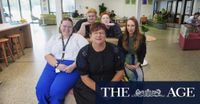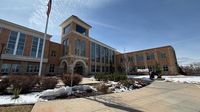In recent years, special assistance schools (SASs) have emerged as the fastest-growing segment of the education sector in Victoria, capturing the attention of educators, parents, and policymakers alike. With enrollment figures surging by an impressive 21% in 2024, compared to significantly lower growth rates of 4.1% for private schools and 1.1% and 1.2% for government and Catholic institutions respectively, these schools are filling a critical gap for students who struggle in traditional settings.
Currently, more than 4,500 young people attend around 30 special and special assistance schools across 47 campuses throughout Victoria, with a national enrollment of approximately 15,500. One institution leading the charge in this educational revolution is Hester Hornbrook Academy. Founded in 2017 with fewer than 40 students at its original South Melbourne site, the academy has rapidly expanded to serve nearly 800 students across multiple campuses, including significant growth in Prahran, Sunshine, and the Central Business District (CBD).
Most recently, a new Hester Hornbrook campus opened its doors in Werribee in January 2025, accommodating 160 students and employing 40 staff members. Principal Sally Lasslett noted that demand continues to grow, with the campus expected to welcome an additional 60 students by Term Two of 2025, and plans for yet another campus underway in Melbourne’s northern suburbs.
"The explosive growth underlines the desperate need for alternatives to mainstream schooling," Lasslett stated. She highlighted the increasing prevalence of mental health issues, family violence, and homelessness as reasons that many students are unable to thrive in traditional schools. "The one-size-fits-all school doesn’t meet the needs of every young person," she added, emphasizing the tailored support special assistance schools provide.
At Hester Hornbrook, classrooms are capped at 22 students, and each is staffed by a teacher, a youth worker, and an educational intervention specialist, complemented by further “wraparound” support services onsite. This structure is designed to address the specific social and emotional needs of each student.
Seventeen-year-old Zane Carne, who transitioned from a Catholic school, is a testament to the academy's effectiveness. "It's heaven compared to my previous school," Zane remarked, noting the flexibility of assignments and the emphasis on individual learning paths. "They definitely have more time here for individual conversations and building personal relationships," Zane said, underscoring the value of a supportive educational environment.
Financially, special assistance schools operate differently from mainstream institutions. Though classified as independent, SASs do not charge tuition fees. Instead, they are funded by state and federal governments, along with philanthropic contributions. Rachel Holthouse, chief executive of the lobby group Independent Schools Victoria, believes this model is vital. She noted, "The growth in special assistance schools has been dramatic, demonstrating a growing need for targeted education. Often these students literally have nowhere else to go."
The current crisis of youth mental health is not unique to Australia; it reflects trends observed across many developed countries. As Pasi Sahlberg, a professor in educational leadership at the University of Melbourne, explains, the general decline in mental health and wellbeing among youth has led to increased rates of disengagement in school. Sahlberg argues that large and bureaucratic state school systems are often slow to respond to these changing needs, leaving independent SASs better positioned to adapt quickly.
"School systems have not been able to change and keep up with the pace of thinking about what type of learning young people need," Sahlberg added, illustrating the challenges faced by traditional institutions in providing adequate support to all students.
As the morning sun breaks over the Melbourne skyline, it is evident that special assistance schools are presenting a hopeful alternative for students who have historically faced barriers to education. With their unique models of bespoke learning and the personalized support they offer, SASs like Hester Hornbrook Academy highlight the pressing need for flexibility and innovation in an educational landscape that must accommodate diverse student needs.
These developments raise important questions about the future of education in Australia. As enrollment in special assistance schools continues to rise, there is an opportunity for policymakers and educators to reassess and enhance the support systems available in mainstream schools. The potential for growth in these educational paradigms is promising, suggesting a future where all students, regardless of their backgrounds or challenges, can thrive within a supportive learning environment.





